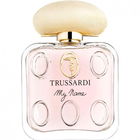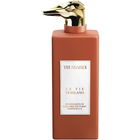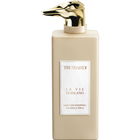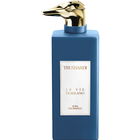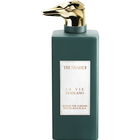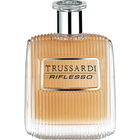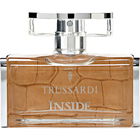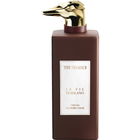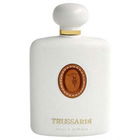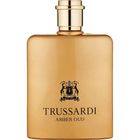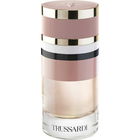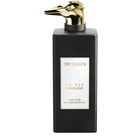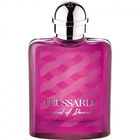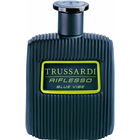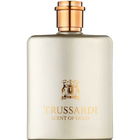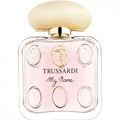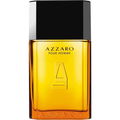
Yatagan
415 Reviews
Translated · Show original

Yatagan
Top Review
41
Black Sabbath
In 1970, the tolling of the bells of doom first echoed in music, heralding a new era: Heavy Metal saw the light of day with the first album by Black Sabbath, revolutionizing the music scene. The dark element entered the world of sounds and tones, and since then, the gloomy, the shadowy has shaped contemporary music. Anyone interested in popular music can no longer escape it: Heavy Metal, Hard Rock, dark electronic music, Gothic... Sound turned black. The world became different in the post-Presley era.
Some may lament this, while others may celebrate it as a revolution. What remains is the realization that every era gets the music it deserves, that this music of the dark side of life, this music of shadows is a reflection of our world, something that shapes itself to appear adequate to our own experiences and fits us so well, giving us something that belongs to this new, yet again old age, like the sound of machines and the smoke of factory chimneys. This world is indeed darkened; the present of most people is shadowed, a latent pessimism has displaced the optimism of the post-war years, becoming a fundamental trait of the mentality of most people in this world.
This year, a circle closes: 13 is the new Black Sabbath, and in the end, the bells toll again, and one might think that a century of gloom, which began with the horrors of World War I, reached an incomprehensible peak in the perverse excesses of inhumanity of World War II and fascist rule, and is almost gently fading away, leaning towards an end: Black Sabbath. This music reflects our society - and we see ourselves in the mirror of our art and cultural creation, as well as in the fragrance that changes from decade to decade, adapting to the respective mentalities.
The 1980s in particular were an ambivalent decade: Immediately following the extravagant, loud 1970s, the age of Aquarius, long hair, and youth revolutions, the 80s called back to tradition, celebrated lifestyle and exclusivity, luxury. Those who see a turning point in this have not understood that the return to conservative values in the face of a rapidly changing society (the 80s are the decade of the beginning media and computer revolution, which was to shatter much of the old) can rather be understood as a continuity, namely as a continuity of the escape from reality, which had been sought and found just a few years earlier through the values of the hippie society, but in the 80s continued as an escape into the shine and glitter of luxury. In both cases, it was about negating reality, about a counter-world to the harsh reality of capitalist (or socialist) economics, the inhumanity of the postmodern risk society.
A fragrance that embodies this time of darkness in a seemingly bright affluent society of the 80s more accurately than any other is Trussardi Uomo: Italian luxury, materialized as crocodile leather imitation in the plastic look of the unmistakable Trussardi bottle in black (the women's bottle, however, was tellingly white): a fragrance full of impact and yet not ordinary - unlike many other 80s fragrances that failed to balance weight and subtlety or elegance, Trussardi Uomo remained a singular of its time (and also of our time), a fragrance that was and is truly unique, a singular among men's fragrances, actually without imitators in this form, even though there were similar, but not equally successful men's fragrances.
This is already shown by the fragrance pyramid, which unites a series of rather unusual components: tomato leaf (listed in only half a dozen more well-known men's fragrances on Parfumo), bitter almond (incredibly but true: contained in only one men’s fragrance, namely this one), okoumé (almost as incredible: processed in only two Trussardi men’s fragrances: no further information researched)...
No wonder that this fragrance is in a way unique and was.
Trussardi Uomo is for me the darkest, blackest men’s fragrance of our times; even Or Black by Morabito cannot compete, and that says something.
Of course, the question is justified as to what a “black” fragrance actually is, how blackness, darkness, and gloom can smell. I admit that this can only be perceived subjectively, that these are entirely individual impressions, that everyone will have a different “black fragrance” in mind, but for me, a dark fragrance must smell like Trussardi Uomo: powerful yet elegant, a bright opening of bergamot and lavender, with resonances of herbal impressions through tarragon, probably also through tomato leaf (however that may smell: hobby gardeners to the front: how does that smell?), in the heart note a strong rose note, underscored by cedar, my favorite wood, in the dry down the sweetness of amber and vanilla, above all the characteristic bitter almond note, which can only be experienced here and that dominates the fragrance from beginning to end, giving it an aristocratic appearance, and finally the warmth of sandalwood.
Dark and hard, clear and powerful, gloomy and energetic:
Black Sabbath: do you hear the bells?
Some may lament this, while others may celebrate it as a revolution. What remains is the realization that every era gets the music it deserves, that this music of the dark side of life, this music of shadows is a reflection of our world, something that shapes itself to appear adequate to our own experiences and fits us so well, giving us something that belongs to this new, yet again old age, like the sound of machines and the smoke of factory chimneys. This world is indeed darkened; the present of most people is shadowed, a latent pessimism has displaced the optimism of the post-war years, becoming a fundamental trait of the mentality of most people in this world.
This year, a circle closes: 13 is the new Black Sabbath, and in the end, the bells toll again, and one might think that a century of gloom, which began with the horrors of World War I, reached an incomprehensible peak in the perverse excesses of inhumanity of World War II and fascist rule, and is almost gently fading away, leaning towards an end: Black Sabbath. This music reflects our society - and we see ourselves in the mirror of our art and cultural creation, as well as in the fragrance that changes from decade to decade, adapting to the respective mentalities.
The 1980s in particular were an ambivalent decade: Immediately following the extravagant, loud 1970s, the age of Aquarius, long hair, and youth revolutions, the 80s called back to tradition, celebrated lifestyle and exclusivity, luxury. Those who see a turning point in this have not understood that the return to conservative values in the face of a rapidly changing society (the 80s are the decade of the beginning media and computer revolution, which was to shatter much of the old) can rather be understood as a continuity, namely as a continuity of the escape from reality, which had been sought and found just a few years earlier through the values of the hippie society, but in the 80s continued as an escape into the shine and glitter of luxury. In both cases, it was about negating reality, about a counter-world to the harsh reality of capitalist (or socialist) economics, the inhumanity of the postmodern risk society.
A fragrance that embodies this time of darkness in a seemingly bright affluent society of the 80s more accurately than any other is Trussardi Uomo: Italian luxury, materialized as crocodile leather imitation in the plastic look of the unmistakable Trussardi bottle in black (the women's bottle, however, was tellingly white): a fragrance full of impact and yet not ordinary - unlike many other 80s fragrances that failed to balance weight and subtlety or elegance, Trussardi Uomo remained a singular of its time (and also of our time), a fragrance that was and is truly unique, a singular among men's fragrances, actually without imitators in this form, even though there were similar, but not equally successful men's fragrances.
This is already shown by the fragrance pyramid, which unites a series of rather unusual components: tomato leaf (listed in only half a dozen more well-known men's fragrances on Parfumo), bitter almond (incredibly but true: contained in only one men’s fragrance, namely this one), okoumé (almost as incredible: processed in only two Trussardi men’s fragrances: no further information researched)...
No wonder that this fragrance is in a way unique and was.
Trussardi Uomo is for me the darkest, blackest men’s fragrance of our times; even Or Black by Morabito cannot compete, and that says something.
Of course, the question is justified as to what a “black” fragrance actually is, how blackness, darkness, and gloom can smell. I admit that this can only be perceived subjectively, that these are entirely individual impressions, that everyone will have a different “black fragrance” in mind, but for me, a dark fragrance must smell like Trussardi Uomo: powerful yet elegant, a bright opening of bergamot and lavender, with resonances of herbal impressions through tarragon, probably also through tomato leaf (however that may smell: hobby gardeners to the front: how does that smell?), in the heart note a strong rose note, underscored by cedar, my favorite wood, in the dry down the sweetness of amber and vanilla, above all the characteristic bitter almond note, which can only be experienced here and that dominates the fragrance from beginning to end, giving it an aristocratic appearance, and finally the warmth of sandalwood.
Dark and hard, clear and powerful, gloomy and energetic:
Black Sabbath: do you hear the bells?
27 Comments










 Top Notes
Top Notes  Thyme
Thyme Aldehydes
Aldehydes Basil
Basil Bergamot
Bergamot Juniper
Juniper Lavender
Lavender Marjoram
Marjoram Heart Notes
Heart Notes  Carnation
Carnation Cedarwood
Cedarwood Honey
Honey Laurel
Laurel Iris
Iris Rose
Rose Vetiver
Vetiver Cinnamon
Cinnamon Base Notes
Base Notes  Leather
Leather Labdanum
Labdanum Moss
Moss Patchouli
Patchouli Musk
Musk Tonka bean
Tonka bean Frankincense
Frankincense
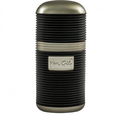












 Akunin
Akunin Hermesh
Hermesh HugoMontez
HugoMontez Charilaos77
Charilaos77 Eggi37
Eggi37 Salva
Salva Foxear
Foxear Unchaned
Unchaned MonsieurTest
MonsieurTest Scentwolf
Scentwolf